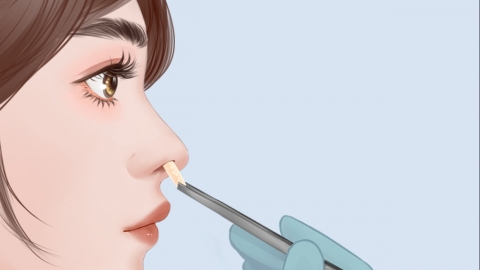How can I make my nose smaller?
Generally, there are various methods to make the nose appear smaller, including natural approaches and medical cosmetic procedures, such as nasal massage, developing good breathing habits, hyaluronic acid injections, alar base reduction surgery, and implant insertion. The details are as follows:

1. Nasal Massage
Use the thumbs or middle fingers of both hands to press on both sides of the nostrils daily, then gently push them inward. However, excessive force should be avoided. Massage can promote local blood circulation and help alleviate the appearance of a large nose, but it requires long-term persistence and the results may not be significant.
2. Develop Good Breathing Habits
Avoid breathing through the mouth as much as possible. Long-term mouth breathing may affect nasal and facial development, leading to poor nasal shape. Avoid frequently scrunching the nose or making exaggerated facial expressions to reduce excessive movement of the nasal muscles.
3. Hyaluronic Acid Injection
Injecting hyaluronic acid at the root or bridge of the nose can make the nasal bridge more prominent, thereby visually reducing the apparent size of the nose. The cost of hyaluronic acid injections varies depending on the region and clinic, and periodic injections are required to maintain the effect. Side effects such as skin warmth or swelling may occur after injection, with noticeable improvement generally seen within 7–10 days.
4. Alar Base Reduction Surgery
Small incisions are made on the alar regions, and excess soft tissue or skin from both sides of the nostrils is removed before suturing, thereby reducing the size of the nose. The cost of alar base reduction surgery also varies depending on the region and clinic, and a recovery period is required after surgery. Common side effects include localized bleeding or hematoma, with noticeable improvement generally seen within 2–3 weeks.
5. Implant Insertion
If nasal development is abnormal, implant insertion may be considered. Suitable implant materials are inserted into the nose to raise and enhance the nasal bridge, thereby improving the overall appearance of the nose. Implant insertion is relatively expensive, and possible postoperative side effects include a foreign body sensation or rejection reaction. A recovery period is required after surgery, with noticeable improvement generally seen within 1–2 months.
Postoperative care and recovery should follow the doctor's instructions to prevent infection and other complications.







